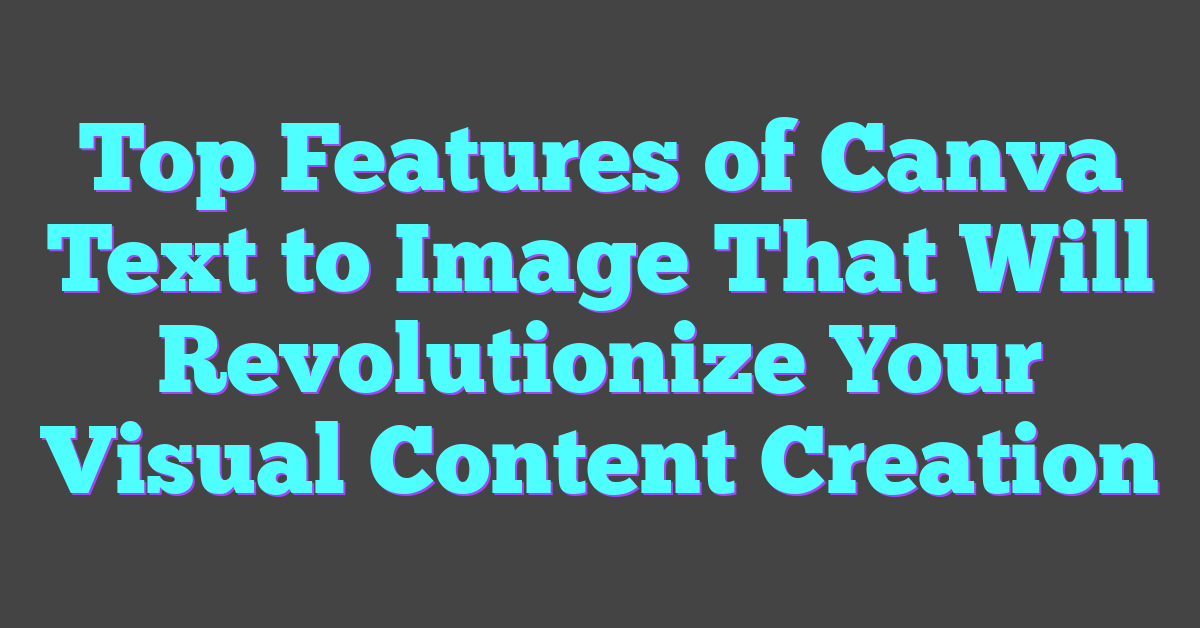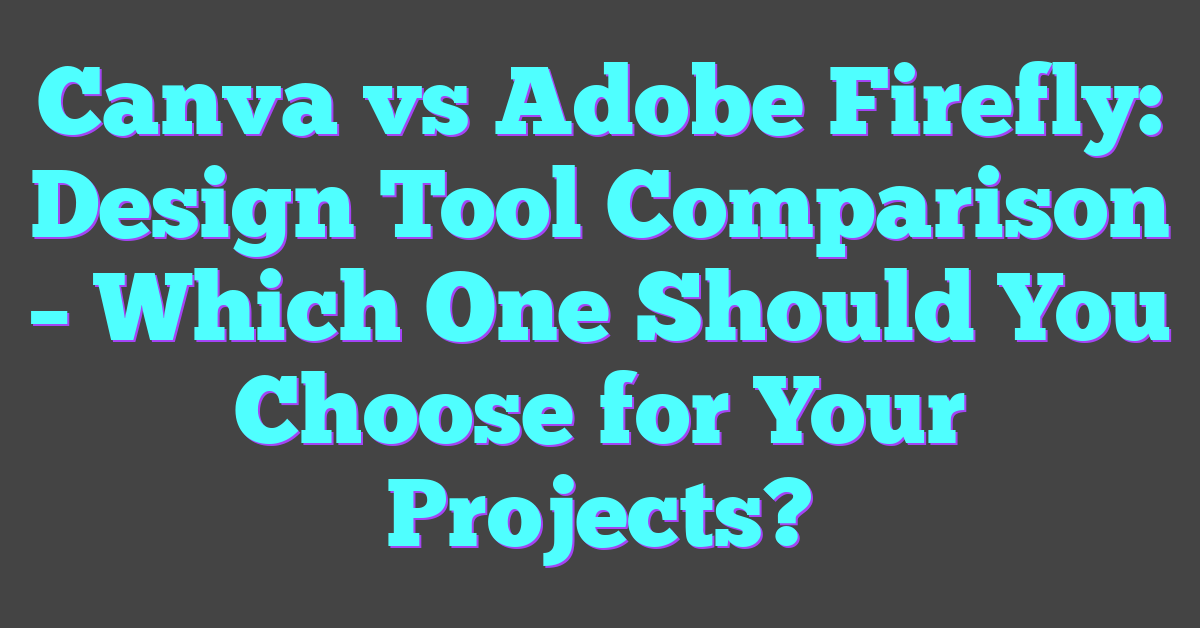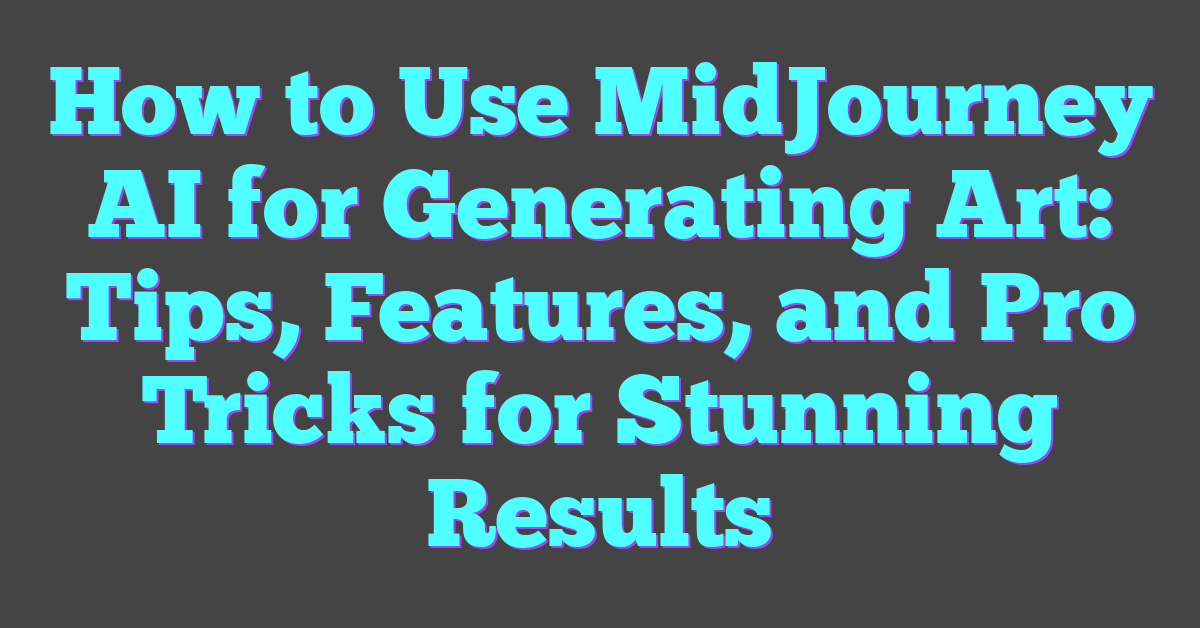I’ve always loved how technology keeps making creativity easier and more accessible. Canva’s Text to Image feature is a perfect example of that. It takes your imagination and turns it into stunning visuals with just a few words. Whether you’re designing for fun, work, or social media, this tool opens up endless possibilities.
What I find so exciting is how simple yet powerful it is. You don’t need design skills or hours of effort—just type your idea, and Canva brings it to life. It’s like having an artist at your fingertips! If you’re curious about what makes this feature so special, let’s dive into its top highlights.
Overview Of Canva Text To Image
Canva’s Text to Image feature uses advanced AI to convert text into visual representations. By leveraging deep learning algorithms, it transforms written prompts into detailed, high-quality images. This process relies on natural language understanding and image synthesis techniques, allowing users to describe visuals in words and receive precise graphical outputs.

As someone passionate about AI, I find it fascinating how the feature bridges complex neural networks with user-friendly interfaces. The model interprets descriptive text, processes contextual cues, and generates visuals that align with the given input. This combination of generative AI and intuitive design caters to both beginners and professionals in content creation.
For creators like me, this tool enhances workflow efficiency. Instead of sourcing or designing images from scratch, I can input prompts like “lush green forest with sunlight filtering through trees” or “futuristic city skyline at sunset” and instantly get tailored visuals. These outputs can be refined further in Canva’s design editor, offering seamless customization.
Overall, the system amplifies creativity while reducing manual effort, making it a perfect example of how AI democratizes content development.
User-Friendly Design
As someone passionate about AI and machine learning, I value tools that make innovative technology accessible to everyone. Canva’s Text to Image feature integrates simplicity with powerful AI capabilities, creating a smooth and enjoyable user experience.
Simple Interface
The interface focuses on clarity and intuitive navigation. With minimal clicks, users can type their text prompt and instantly generate visuals. The design places all essential options—text input, style selection, and image preview—in a single, clearly defined workspace. Even users unfamiliar with AI-powered tools can understand and use it with confidence, thanks to its thoughtful layout.
Ease Of Use
The tool reduces complexity in image creation. Behind the scenes, machine learning algorithms handle the challenging tasks of interpreting input and creating visuals, so users only need to focus on their ideas. Clear labels, example prompts, and built-in guidance ensure effortless usability. Whether someone’s creating content for social media, blogs, or presentations, the process feels seamless and optimized for creativity without technical barriers.
Advanced Customization Options
Canva’s Text to Image feature offers remarkable customization capabilities, enabling users to fine-tune their visual outputs. By combining advanced AI algorithms with intuitive controls, it bridges creativity and precision seamlessly.
Text Styling Features
The tool incorporates dynamic text styling options to align visuals with specific design goals. Users can define creative prompts with additional descriptors like “modern typography” or “handwritten script” to influence text aesthetics. This contextual flexibility allows precise adjustments matching branding needs or personal preferences.
Styling presets, such as decorative and minimalist, simplify the process for those unsure about specific choices. The AI adapts intelligently to these inputs, ensuring that the generated images feature harmonious font styles and placements. These options enhance the integration of text and visuals, avoiding disjointed designs.
Image Personalization
This feature shines in its capability to generate highly tailored visuals. Users can dictate details like color palettes, background themes, and object appearance within their text prompts. For instance, specifying “a serene lake at sunset in pastel tones” yields an image reflecting those exact attributes.
AI-driven recommendations enhance personalization by suggesting refinements based on user behavior. Layering options further expand control, allowing adjustments to transparency or positioning. This deep personalization ensures that every output aligns with distinct project requirements, from blog illustrations to social media posts.
AI-Powered Image Generation
Canva’s Text to Image leverages advanced AI to create visuals from text prompts with remarkable accuracy. It combines machine learning with user-centric design, redefining how we approach content creation.
Precision And Quality
This feature uses generative AI models trained on diverse datasets to ensure output aligns with user input. By analyzing descriptive language, it produces detailed images tailored to the specified prompt. For example, typing “a serene beach sunset with mountains in the background” results in vibrant, photorealistic visuals that capture the essence of the description. The tool minimizes errors in concept interpretation, providing consistent results with professional-grade quality across different styles, including realistic, abstract, and artistic.
Speed And Efficiency
AI optimizes the process by generating visuals within seconds. Traditional design workflows often demand lengthy manual adjustments. With Text to Image, extensive steps like sketching or photo sourcing are replaced by AI-driven automation. Users simply input their ideas, and the system seamlessly transforms them into polished images. This speed enhances productivity for creators managing tight deadlines or needing swift visual solutions for platforms like Instagram or blog content.
Versatile Applications
Canva’s Text to Image feature offers a range of use cases, combining the power of AI with creative design. By leveraging advanced machine learning techniques, it transforms text inputs into striking visuals suitable for various scenarios.
Marketing And Branding
Creating brand-aligned materials becomes seamless with this feature. By providing descriptive prompts, I can generate visuals that reflect brand identity, from specific color schemes to thematic elements. For instance, specifying “a modern, minimalist design with blue and white accents” results in imagery that fits brand guidelines. This application ensures consistency across promotional materials, whether for banners, infographics, or product showcases.
AI enhances brand storytelling by adjusting styles and textures to complement the text. For example, a campaign slogan like “Bringing Elegance to Everyday Life” can inspire visuals with clean layouts and soft gradients. Canva’s Text to Image saves time while preserving the quality needed for impactful marketing.
Social Media Content
Designing engaging social media graphics is easier with AI-driven tools. Using this feature, I’ve created captions like “adventurous travel vibes” or “cozy café aesthetic” to generate tailor-made visuals for platforms such as Instagram or TikTok. The tool adapts to the platform’s dimensions, ensuring optimal resolution and layout.
The capability to customize details, like background imagery and typography styles, allows me to produce eye-catching posts that boost engagement. For instance, a prompt for “a vibrant summer sale design with bold fonts” results in a high-quality visual ready to upload. It simplifies the process of maintaining an active and visually appealing online presence.
Pricing And Accessibility
Canva’s Text to Image feature operates within Canva’s subscription tiers, making it available across free and paid plans with varying levels of access. Free-tier users can experiment with the tool but may face limitations on image generations or customization options. Pro-tier subscribers unlock enhanced capabilities, including unlimited renders and access to additional design elements, which optimize creativity and personalization.
The tool is accessible via desktop and mobile platforms, integrating seamlessly with Canva’s design ecosystem. Users can generate visuals anytime, whether they’re at their desk or on the go, leveraging its cross-device compatibility. This versatility ensures creators can incorporate AI-generated designs into their workflows without interruptions.
For users in varied industries, the pricing ensures scalability. Teams working on large-scale projects, for example, benefit from Canva’s “Team” tiers, which provide multi-user access and collaborative features. This pricing model balances affordability with advanced functionality, enabling anyone—from independent creators to businesses—to leverage this AI-powered tool efficiently.
Conclusion
Canva’s Text to Image feature feels like a game-changer for anyone looking to bring their ideas to life effortlessly. Its combination of AI-powered precision, user-friendly design, and customization options makes it an incredible tool for creators of all levels. Whether you’re crafting visuals for social media, blogs, or branding projects, this feature offers endless possibilities.
I love how it balances creativity with simplicity, allowing me to focus on my ideas while the tool handles the heavy lifting. If you haven’t explored it yet, I’d highly recommend giving it a try—you might just find it transforms the way you create.




